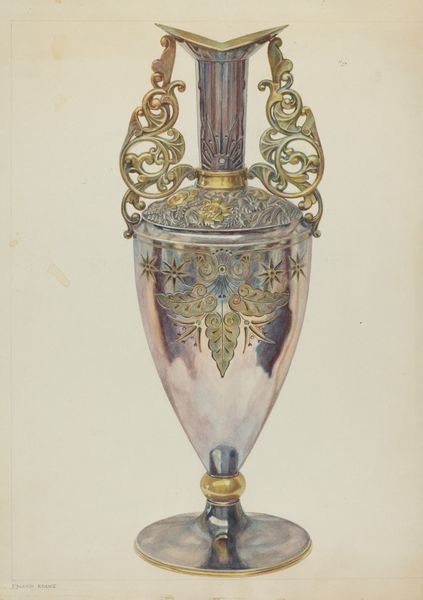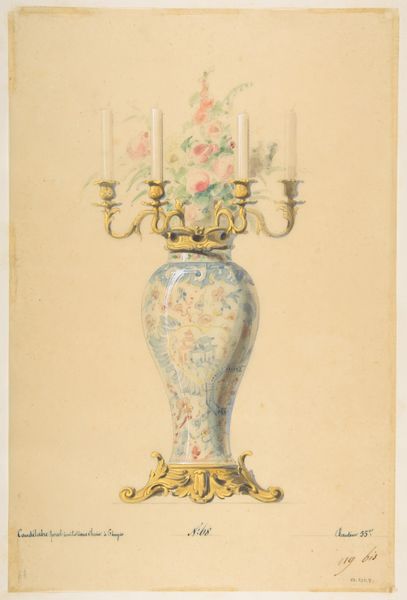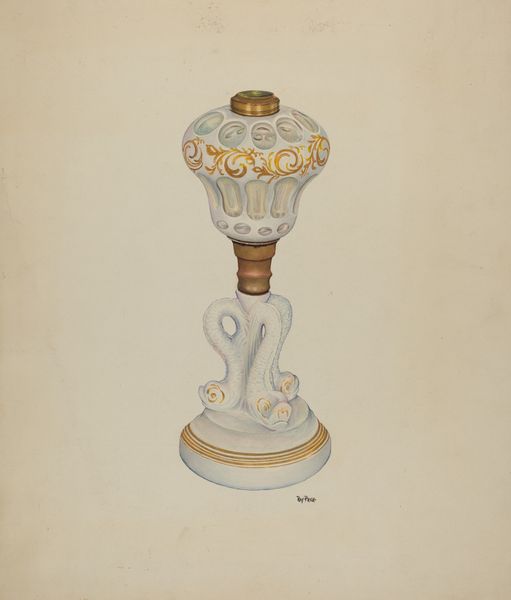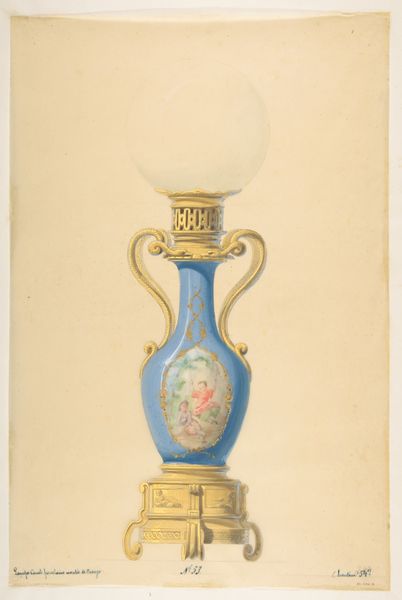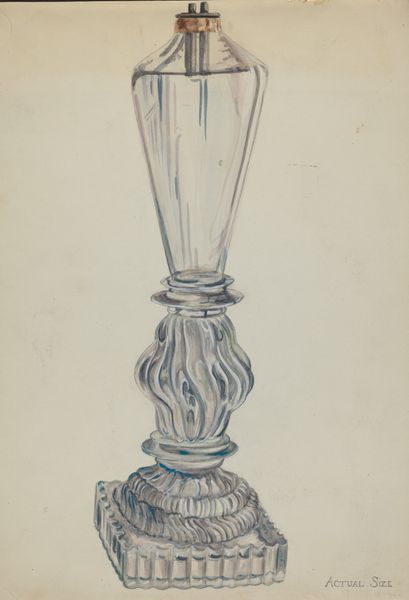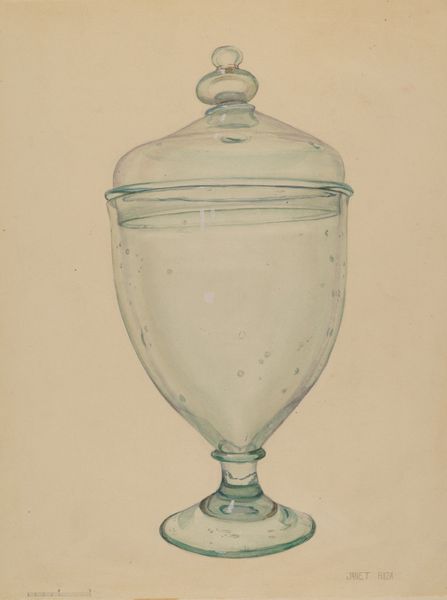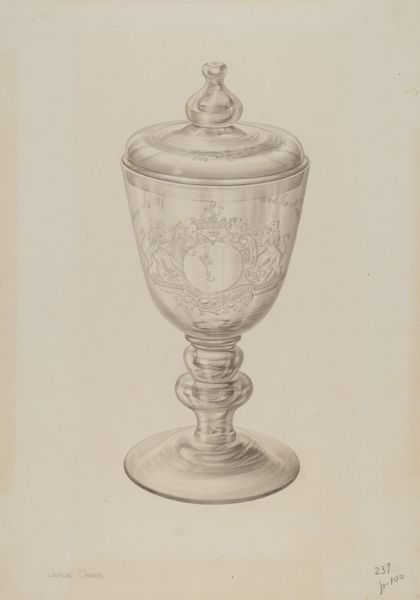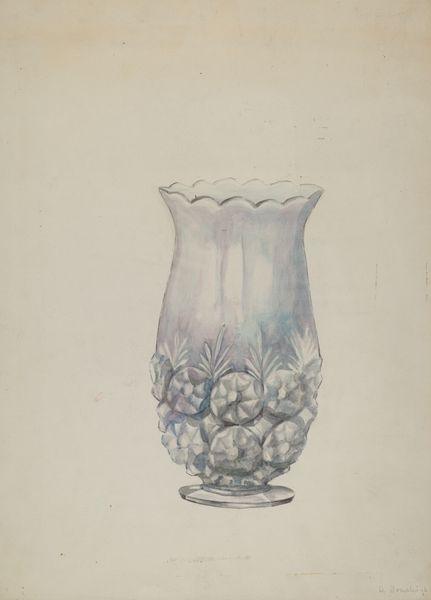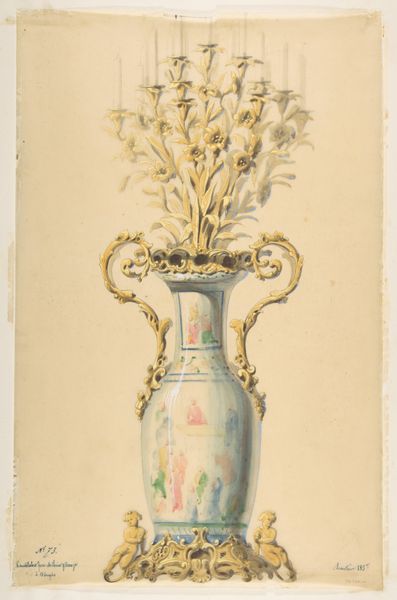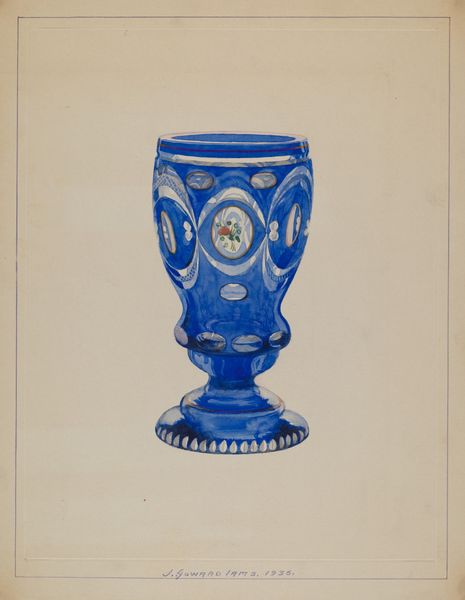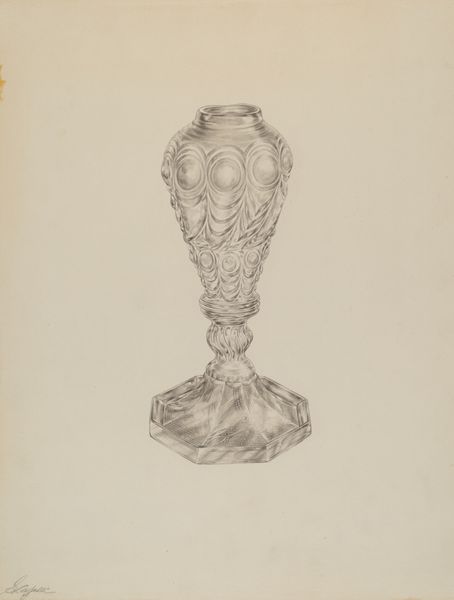
drawing, ceramic, watercolor, earthenware
#
drawing
#
ceramic
#
watercolor
#
earthenware
#
ceramic
#
earthenware
Dimensions: overall: 40.5 x 30.5 cm (15 15/16 x 12 in.) Original IAD Object: 8" High 2 1/2" Dia(base) 2 1/8" Dia(base)
Copyright: National Gallery of Art: CC0 1.0
Curator: Let’s consider this work, simply titled “Vase,” a drawing attributed to John Cutting, made around 1941, composed with watercolor and drawing on earthenware, focusing on the depiction of a ceramic object. Editor: It has this very fragile, antique aura, even though it's rendered so plainly. The subtle watercolor work hints at cracks and imperfections in the vase itself. There’s a melancholy to it. Curator: Yes, and the choice of subject speaks volumes about artistic production during wartime. Limited resources meant a shift, often towards the depiction of the everyday objects at hand, the "stuff" around us in moments of turmoil. The focus narrows to domestic scales. Editor: Right, that shift toward what is immediately present. Looking at it materially, the fact that this drawing aims to capture earthenware, a common material, draws a distinct line to the user and its use as more than just an image; it hints at a relationship of the maker and what can be found and created from earthly matter. The floral design looks almost spontaneously placed; a utilitarian item trying to look appealing. Curator: And note how the artist carefully documents this seemingly ordinary vessel. Is this a way of preserving cultural heritage in the face of possible destruction? Does this record hold its own political weight given its era? The handles, so meticulously detailed with their colored ringlets…they’re elevated here from simple functionality to works of careful, refined making. Editor: Agreed; that detailed portrayal stands as a counterpoint to the rough, almost broken nature of the vase's lip. It feels unfinished, maybe actively used at the time. It resists being framed only as “art;” it wants to keep its ties to practical reality and tangible labor and daily domestic tasks. It’s refusing the "high art" designation, right? Curator: Absolutely! It exists in that blurry space between pure artistry and everyday utility, challenging our definitions. Seeing this image brings many conversations about domestic life, craftsmanship, and art history during global crisis periods. Editor: And thinking about that intersectionality between function and beauty allows you to wonder, also, about how something can exist both with aesthetic desire but also purpose of making with one’s own hand. It transcends beyond just being beautiful; it speaks to labor and our very sense of material existence.
Comments
No comments
Be the first to comment and join the conversation on the ultimate creative platform.
